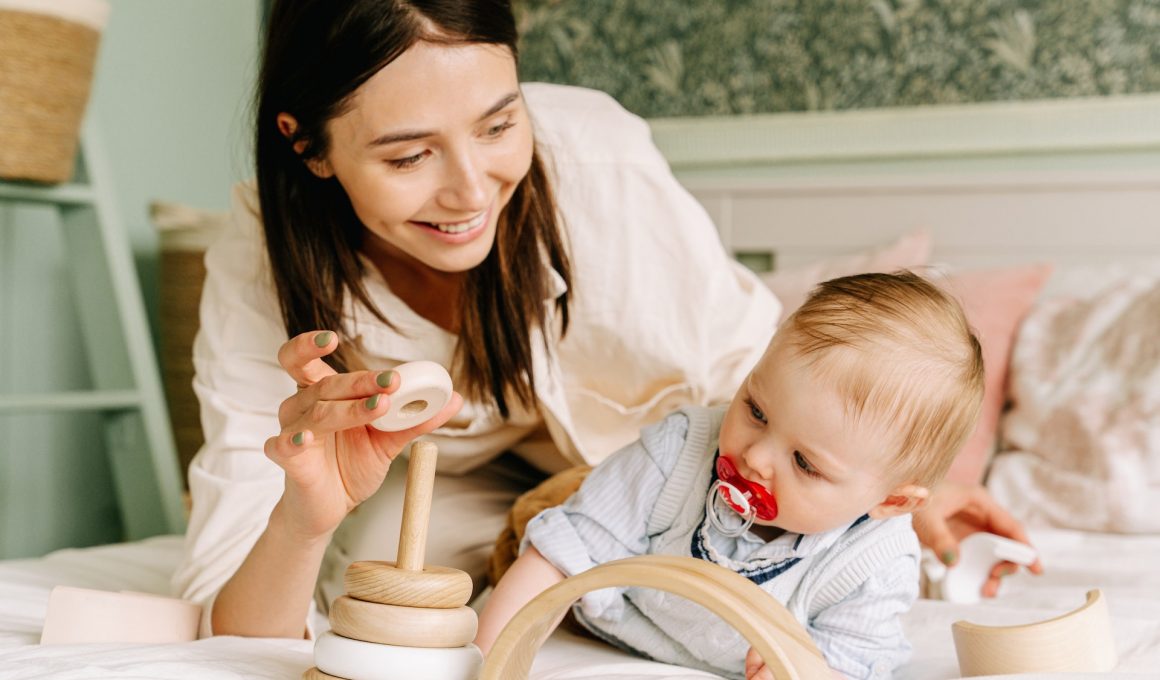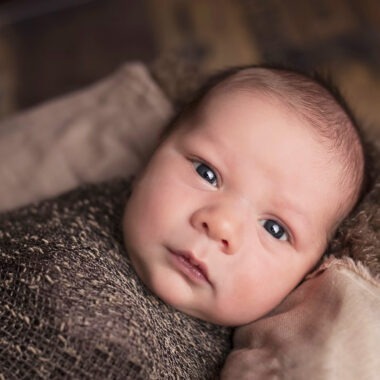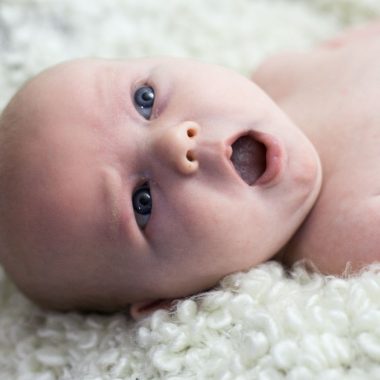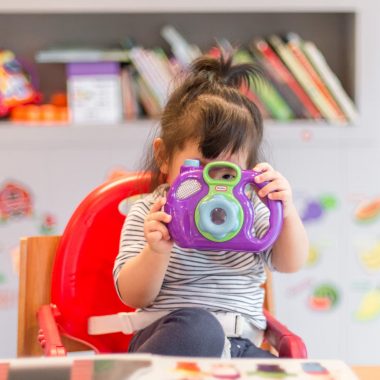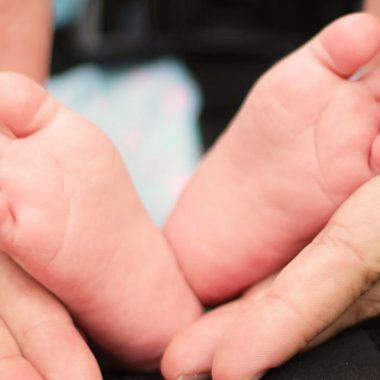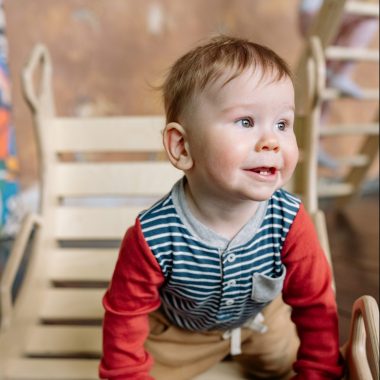Babies need secure attachment for many reasons, including,
- to survive
- to grow
- to become individuals and
- to thrive in relationships.
This is because secure attachment makes your baby feel
- Safe
- Seen and known
- Comforted
- Valued
- Supported for being their best self
These feelings form the basis of social and emotional development, communication, and relationships to grow and develop in the best way possible.
British psychologist John Bowlby (who formulated attachment theory in the 1970s) stated that infants need a secure attachment bond with a primary attachment figure to develop a healthy internal working model of relationships.
This internal working model is a cognitive framework comprising of mental representations for understanding the world, one’s self, and others and is based on the relationship with a primary caregiver.
It becomes a prototype for all future social relationships and allows individuals to predict, control, and manipulate interactions with others.
Professor Alan Sroufe, a developmental psychologist and an internationally recognized expert on early attachment relationships, defines attachment as a relationship in the service of a baby’s emotion regulation and exploration: It is the deep, abiding confidence a baby has in the availability and responsiveness of the caregiver.
The early attachment style of the baby and the caregiver (parents or anyone else in the absence of the parents) has a remarkable impact on the baby’s life, as Bowlby and Sroufe deduced.
Now let’s get into secure attachment and understand how it develops and affects your child’s life.
Table of Contents
- What Does Secure Attachment Mean?
- When Does Secure Attachment Begin In Babies?
- How Does Secure Attachment Develop?
- Why Is Secure Attachment So Important?
- What Are The Three Important Functions of Secure Attachment?
- What Are The Typical Behaviours That Promote Secure Attachment in Children?
- What Are The Typical Characteristics of A Child With Secure Attachment?
- How To Nurture A Secure Attachment Between A Parent and Their Baby?
- What Are The Developmental Milestones Related To Secure Attachment?
- What Might Be The Lifetime Effects of Secure Attachment?
- Nonverbal Communication Tips For Caregivers To Establish Secure Attachment
- Tips For Parents For Establishing A Secure Attachment
What Does Secure Attachment Mean?
Secure attachment is a bond that allows optimal development of a child’s nervous system by meeting their need for comfort, security, calm, value, and support.
A child forms expectations about the world and people through the way caregivers meet their needs.
Secure attachment significantly impacts many areas of a child’s life, from how they explore the world to how they socialize.
A secure attachment bond ensures a child feels secure, understood, and calm. It also,
- Optimizes a child’s brain development
- Impacts self-awareness, empathy, trust, and an eagerness to learn
Within secure attachment, a child will prefer their parents to strangers and can distinguish one from the other. A child will also be aware of the fact that their parents will return.
A child with secure attachment seeks comfort from their parents when they’re scared.
Children with secure attachments tend to be social individuals with trusting, lasting relationships and good self-esteem.
When Does Secure Attachment Begin In Babies?
Attachments between an infant and the primary caregiver begin developing at birth through one-on-one interactions. These early interactions affect the child’s brain development.
Secure attachment develops in children during the first eighteen months of life. This points to the importance of the primary caregiver being emotionally and physically present.
To establish a secure attachment with a child, caregivers need to:
- Behave predictably towards the child,
- Be responsive to the child’s needs
- Nurture a warm and loving relationship with the child
As a caregiver, it is possible to develop a secure attachment with a baby even through nonverbal emotional interactions. These include:
- reassuring touches
- attentive eye contact
- warmth in tone of voice
How Does Secure Attachment Develop?
The relationship established between the baby and the caregiver in the first two years forms the basis of the child’s entire life.
Dan Siegel, clinical professor of psychiatry at the UCLA School of Medicine, says that the quality of a person’s early attachment is a critical factor in their healthy development.
According to Siegel, a secure attachment makes it more likely that a child will be flexible, insightful, and resilient. In order to build this, he takes us through the 3 S’s: being seen, soothed, and safe:
Understanding Siegel’s 3 S’s
Seen
Being seen is more than just being observed physically. It points to being perceived profoundly and empathically. When someone is responsive to us in a way that makes us feel seen, there’s a sense of connection. We feel empathized with and soothed by knowing that they understand what we are experiencing.
Soothed
A child feels soothed when they are supported in dealing with difficult emotions and situations.
Safe
For secure attachment, a child needs to feel protected and safe from actions and responses that frighten or hurt them.
Developing a secure attachment between you and your child doesn’t require you to be a perfect parent. Dr. Alan Sroufe says, “secure attachment is not a set of tricks.”
It has nothing to do with the educational basis or quality of care. It is based on the quality of nonverbal communication that takes place between the caregiver and the child.
Even in the first days of life, your baby understands your emotional cues through your tone of voice, gestures, and emotions. And then, the child responds by sending you signals such as crying, cooing, mimicking facial expressions, and eventually smiling, laughing, pointing, and even yelling.
In return, you watch and listen to your baby’s cries and sounds and respond to their cues. This intimate level of communication is where secure attachment develops.
Secure attachment stems from the success of this nonverbal communication process between you and your baby.
Why Is Secure Attachment So Important?
Secure attachment causes the parts of your baby’s brain responsible for social and emotional development, communication, and relationships to grow and develop in the best way possible.
A secure attachment bond teaches your baby to
- trust you,
- to communicate with you
- and to trust others as well.
As you and your baby connect, your baby learns to have a sense of self and to engage in a loving, empathetic relationship.
This relationship becomes the foundation of your child’s ability to connect with others in a healthy manner.
Qualities like
- empathy,
- understanding,
- love,
- and the ability to be responsive to others are all learned in infancy.
Secure attachment forms the basis for these qualities.
What Are The Three Important Functions of Secure Attachment?
Secure attachment impacts how your child develops mentally, physically, intellectually, emotionally, and socially.
As explained by Dr. Dan Siegel, secure attachment has at least three functions:
- Provide a sense of safety and security
- Regulate emotions by soothing distress, creating joy, and supporting calm
- Offer a secure base from which to explore and grow
What Are The Typical Behaviours That Promote Secure Attachment in Children?
The caregivers who promote secure attachment in children
- Are warm, nurturing, and attentive.
- Are reliable in their actions.
- Are responsive to their child’s needs.
- Stay close to their child, and give them space to explore their world.
- Encourage a sense of independence in their child.
What Are The Typical Characteristics of A Child With Secure Attachment?
A child with a secure attachment bond exhibits these typical characteristics:
- They seek comfort and affection from their caregivers because they know they are available.
- They are comfortable being around others but prefer their caregiver’s company.
- They have strong social skills.
- They have a healthy sense of self.
- They are comfortable exploring the world around them.
How To Nurture A Secure Attachment Between A Parent and Their Baby?
Let’s think about a baby. What is the basic need of a baby? The answer is simple: love.
Being loved and feeling loved compassionately.
What are the other needs of a baby?
- Warmth
- Physical contact
- The calm associated with the sound of their parents
- Gentle physical touch
- Hearing their parents’ heartbeat
- Responsive actions from adults
- Being nursed when hungry
- Being changed when needed
- Being protected from overstimulation
When the baby’s needs are met with love and compassion, the basis of secure attachment is formed.
The ideal situation is where a secure attachment between the baby and the parents is developed. But life doesn’t always present us with ideal conditions. In that case, another primary caregiver introducing an affectionate and responsive environment for a baby would establish a secure attachment.
What Are The Developmental Milestones Related To Secure Attachment?
Developmental milestones might be the key to tracking the attachment issues of a baby.
By understanding the developmental milestones related to secure attachment, you can spot symptoms of insecure attachment and take steps to repair them under the supervision of an expert.
0-3 Months
By this age, your baby should,
- Follow and react to bright colors, movement, and objects.
- Turn toward sounds.
- Show interest in watching people’s faces.
- Smile back when smiled at.
3-6 Months
By this age, your baby should,
- Display joy when interacting with you.
- Make sounds like cooing, babbling or crying to express emotions.
- Smile a lot during playtime.
4-10 Months
By this age, your baby should,
- Use facial expressions and sounds when interacting, like smiling, giggling, or babbling.
- Have playful exchanges with you.
- Alternate back and forth with gestures (giving and taking), sounds, and smiles.
10-18 Months
By this age, your baby should,
- Play games with you like peek-a-boo or patty cake.
- Use sounds like ma, ba, na, da, and ga.
- Use different gestures (sometimes one after another) to show needs like giving, pointing or waving.
- Respond to their name when called.
18-20 Months
By this age, your baby should,
- Know and understand at least 10 words.
- Use at least four consonants in words or babbling like b, d, m, n, p, t.
- Use words, gestures and signals to communicate needs like pointing at something.
- Enjoy simple pretend play like hugging or feeding a doll or stuffed animal.
- Demonstrate familiarity with people or body parts by pointing or looking at them when named.
At 24 Months
By this age, your baby should,
- Know and understand at least 50 words.
- Use two or more words together to say something like “want milk,” or “more crackers.”
- Show more complex pretend play, like feeding the stuffed animal and then putting the animal in a stroller.
- Show interest in playing with other children by giving objects or toys to others.
- Respond to questions about familiar people or objects not present by looking for them.
At 36 Month
By now, your baby should,
- Put thoughts and actions together like “sleepy, want blanket,” or “hungry for yogurt” and going to the refrigerator.
- Enjoy playing with children and talking with other children.
- Talk about feelings, emotions and interests and show knowledge about time (past and future).
- Answer “who,” “what,” “when,” and “where” questions without too much trouble.
- Pretend to play different characters—either by dressing up and acting or with toy figures or dolls.
What Might Be The Lifetime Effects of Secure Attachment?
Alan Sroufe, who conducted many studies to discover the long-term impact of secure attachment, says, “Nothing is more important than the attachment relationship.”
According to studies, one of the most important impacts of secure attachment early in life is greater independence down the road, whereas insecure attachment leads to a child being less independent later in life.
Other impacts of secure attachment are:
- A greater sense of self-agency
- Better emotional regulation
- Higher self-esteem
- Better capacity to cope with stress
- More positive engagement in the preschool peer group
- Closer friendships in middle childhood
- Better coordination of friendships and social groups in adolescence
- More trusting, non-hostile romantic relationships in adulthood
- Greater social competence
- More leadership qualities
- Happier and better relationships with parents and siblings
- Greater trust in life
Nonverbal Communication Tips For Caregivers To Establish Secure Attachment
It’s not always necessary to speak or talk to your baby to communicate. Sensory signals communicated by body language, touch, facial expression, and tone of voice are enough to create a sense of recognition, safety, and comfort for your child.
Even when your child reaches an age when they can express themselves using words, nonverbal communication remains integral for establishing a secure attachment.
Now let’s look at how we can use nonverbal communication to create a secure attachment.
Eye Contact
When you look at your child’s face with compassion, they pick up on the positive emotions conveyed through this nonverbal signal. This leads your child to feel safe, relaxed, and happy. Making and maintaining eye contact is a way of expressing your presence and being communicative.
Facial expressions
Facial expressions convey various levels of emotions depending on the context.
Your child will feel secure if your expression is calm and attentive when communicating with them.
If you look angry, worried, sad, fearful or distracted, your child will pick up on these negative emotions and, in turn, feel stressed and unsafe.
Tone of voice
Even if your child is too young to understand the words, they can understand the difference between the various tones of your voice.
In communication, the tone of voice is defined as “the way a person speaks to someone”.
Your infant would feel the difference between a harsh, indifferent, or preoccupied tone and a tone that conveys tenderness, interest, concern, and understanding.
You should pay attention to the tone you use when addressing your child.
Touch
Touch plays a key role in the healthy development of a child. It is one of the primary means of communicating with your baby.
The way you touch your child conveys your emotional state. How you wash, lift or carry your baby or give your child a warm hug, a gentle touch on the arm, or a reassuring pat on the back can convey a significant degree of emotions to your child.
Body language
Body language is the unspoken part of communication that reveals true feelings and intentions. The way you sit and move and your gestures convey a wealth of information to your child.
For example, if you talk to your child with your arms crossed and your head back, they will regard you as defensive and uninterested.
But if you sit with a relaxed, open posture and lean towards your child, they will feel heard and seen.
Tips For Parents For Establishing A Secure Attachment
Taking good care of yourself is a reliable beginning for establishing a secure attachment. When you are in a good place, both mentally and emotionally, it is far easier to build a secure bond with your little one.
Some tips for self-care to help you always be your best self are:
Try to get enough sleep
Sleep deprivation increases the production of cortisol, a stress hormone. This can lead you to feel irritable, intolerant, and listless.
Trading night duty with your partner, taking at least one morning a week to sleep late, or asking for help might be helpful for you to catch up on missed sleep.
Ask for support
Get as much help as possible from your partner, family, or friends – especially during the newborn stages. If your loved ones offer to help, accept it with grace.
This can go a long way in giving you the mental and emotional clarity to establish a secure attachment with your baby.
Spare some time for yourself
Looking after a newborn or an infant is a demanding process. If you don’t take time off to step back every once in a while, you will wear yourself out.
Taking short breaks for just an hour and visiting your favorite cafe, going for a short walk, or reading a book can replenish your energy greatly,
Take time out for yourself and watch how it transforms your energy and vision.
References: healthline.com, helpguide.org, mother.ly, verywellmind.com, betterhelp.com, developmentalscience.com, attachmentproject.com, lifeskillsgroup.com.au, drdansiegel.com, parentingforbrain.com, simplypsychology.org


